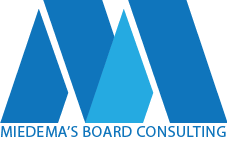I recently attended the BoardSource Leadership Forum in Seattle, Washington which brought together almost 1,000 governance enthusiasts to learn about leading practices in governance. One of the most interesting and practical breakout sessions I attended was about managing the succession process of a founder, the learnings from which can be applied to any succession plan from a much loved or larger-than-life leader to their successor.
The Bridgespan Group led the breakout session because, in collaboration with GuideStar and BoardSource, they are in the process of finalizing a research report about founder succession based on analysis, polling and interviews of founders and successors. It is an area with historically little hard data to guide boards so Bridgespan shared the evidence of the conditions under which organizations benefit from a founder staying on, the roles he or she might play and concrete steps boards can take years before a transition to lay the groundwork for success. Typical roles for a founder/CEO are fundraising, policy, advocacy, mentoring the new CEO and/or acting as a spokesperson or ambassador for the organization.
Bridgespan shared the preliminary data and then provided a real-life example of the process in the global charity Right to Play which just completed a two year succession plan from the “larger-than-life” founder and Olympic gold medalist Johann Olav Koss to successor Kevin Frey. Koss and Frey shared their experience and brought to life the four key elements that Bridgespan has identified for a founder/CEO to stay on successfully:
1) The founder/CEO has the capability and desire to stay on;
2) The board can identify clear value in the founder/CEO staying on;
3) The founder/CEO is willing and able to play a smaller role and genuinely wants the successor to succeed; and
4) The successor is willing to work with the founder/CEO.
Aside from the four proven requirements, Koss and Frey brought out other great learnings from their experience. First, the board needs to recognize that the process requires significant time and investment to succeed. Identifying and planning even the smallest of role assignments is key in the first few years. Investing in coaching, psychological testing and monitoring are also important. When weighed against the alternative of losing the potential value of the founder/CEO, conducting another CEO search and losing the momentum of the organization, the investment is warranted. It would not be unreasonable for a board to invest the equivalent of one year of the CEO’s salary and 2-3 years of regular board agenda time in the process.
Second, an escalation process needs to be in place in the event there are disagreements between the founder and the successor. Decide in advance when to involve the Board Chair and the board so problems are dealt with swiftly.
Third, the strategic plan needs to be part of the discussion during the transition. The board needs to be clear about whether the successor is expected to follow an existing plan or has the freedom to develop their own plan. Frey recommends the latter.
Fourth, as much as it feels disrespectful, the founder/CEO needs to take a back seat operationally and physically which includes an office away from the successor so that staff are not conflicted or drawn to the founder/CEO. A significant break away from the office in the form of a vacation, sabbatical or field visit can be a good way of starting to change the institutional memory and giving the successor a fresh start.
Finally, it needs to be recognized that the founder and the successor are on personal journeys as well so monitoring, managing and acknowledging their challenges can help with a successful transition.
The session did a great job of providing proven guidelines and topics for a board to consider when faced with the succession of a founder or beloved CEO. If you are interested in a copy of Bridgespan’s report when it is published in February 2018, please let me know via email or the contact form on my website at https://miedemas.com/contact-us/.







